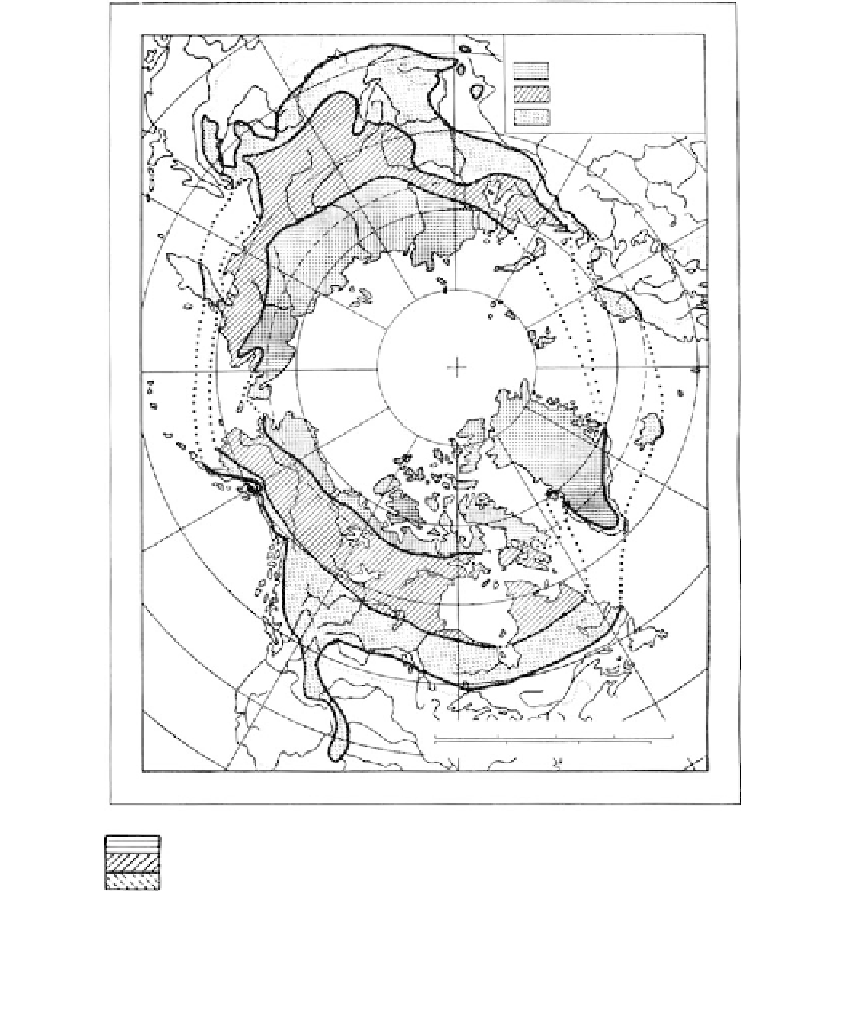Environmental Engineering Reference
In-Depth Information
120
90
60
°
°
°
Explanation
Continuous permafrost
Discontinuous permafrost
Sporadic permafrost
40
°
40
°
50
°
150
°
30
°
50
°
0
°
180
°
50
°
30
°
150
°
50
°
40
°
40
°
30
°
0
0
500
1000
1500
2000 mi
1000
2000
3000 km
30
°
120
°
90
°
60
°
Mean annual ground surface temperature.
°
C)
Zone
Temperature (
Depth (m)
Continuous permafrost
>-5
150
Discontinuous permafrost
Sporadic permafrost
-1 to - 5
<1
0 to 150
0 to 30
FIGURE 7.109
Contemporary extent of permafrost in the Northern Hemisphere. (From Black, R. F.,
Geol. Soc. Am. Bull
., 65,
839-856, 1954. With permission.)
remains unfrozen for a considerable depth. The depth of the active zone is also influenced
by soil conditions; it is much deeper in free-draining soils than in clayey soils, and very
thin under swamps and peat beds, which act as insulators.
Terrain Features
Polygonal patterns:
Thermal contraction of the permafrost in winter generates tensile
stresses, often resulting in tension cracks that divide the surface into polygonal forms.
Ranging from 30 to 300 ft across, they are strikingly obvious from the air. Summer melt-
water draining into the cracks freezes to form veins of ice, which when repeated over long
periods of time results in ice wedges that can be several feet wide at the top and many feet
deep.


